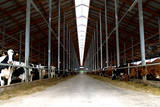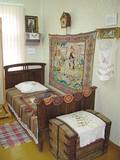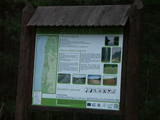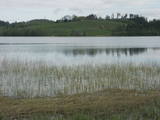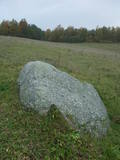| Nr | Nosaukums | Apraksts |
|---|---|---|
|
Atrodas Lielvārdē, Ausekļa ielā 14A, netālu no A6 ceļa. Kafejnīca ”Panna” atrodas Lielvārdes centrā un nodrošina pilnu ēdināšanas servisu kā brokastis, pusdienas, vakariņas, izbraukuma banketus. Tāpat ir iespējams pasūtīt sev tīkamus ēdienus, salātus, kulinārijas izstrādājumus un arī apkalpo banketus kafejnīcas telpās. |
||
|
AS „Agrofirma Tērvete” ir lielākais daudznozaru lauksaimniecības uzņēmums Latvijā, kas darbojas 5 nozarēs - augkopība, piena lopkopība, zirgkopība, sabiedriskā ēdināšana, biogāzes ražošana. |
||
|
Veselībai un pilsētvidei draudzīga transporta – velosipēda lietotāji putnu vērošanas torni var sasniegt pa Ķengaraga promenādes veloceliņu. Tornī izvietoti putnu attēli, kas nezinātājiem atvieglo ūdensputnu vērošanas un atpazīšanas procesu. Redzamas plašas Daugavas ainavas. |
||
|
Saimniecība specializējas uz dažādu dekoratīvo stādu audzēšanu nelielos apjopmos. Sezonas laikā pieejamas arī svaigas krūmmellenes, smiltsērkšķi, cidonijas, augļi un ogas. |
||
|
"Saulrietos" (3 km no Vecpiebalgas centra), kas atrodas ainaviskā vietā - Incēnu kalnā, ir izveidots leģendārās latviešu pasakas "Kaķīša dzirnavas" autora Kārļa Skalbes (1879 - 1945) memoriālais muzejs. Tas atrodas 1926. g. celtajā dzejnieka un prozaiķa vasaras namā (pavadīja vasaras laikā no 1926. - 1944.g.) un darbojas kopš 1987. g. Blakus esošā Vaktskalna rietumu nogāzē (skaists skats uz Alaukstu) 1992. g. pārabedīja urnu ar Zviedrijā mirušā Kārļa Skalbes un viņa dzīvesbiedres - Lizetes Skalbes pelniem, kur izveidots savdabīgs piemineklis akmens laivas formā. |
||
|
Maltas Vēstures muzejs. Ekspozīcija „
Maltas pagasts gadsimtos no Rozentovas
līdz Borovajai un Maltai”. Piedāvājam iepazīt sadzīves priekšmetus, darbarīkus,
mākslas priekšmetus, naudas zīmju kolekciju. Ekskursija ārpus muzeja
„Kur Maltas upe līkumus met”.
Darba laiks: P. - Piekt: 9.00 – 17.00, S., Sv : slēgts |
||
|
Teritorija, kas ietver piekrastes posmu starp Ventspils – Liepājas šoseju un Baltijas jūru abpus Užavas upes lejtecei. Dibināta dažādu piekrastes biotopu, piemēram, pelēko kāpu un augu sugu aizsardzībai. Dienvidos no Užavas ietekas atrodas viena no romantiskākajām piekrastes bākām – Užavas bāka, kas celta stāvas kāpas galā. |
||
|
Take a train from Riga to Cēsis and stay in the very heart of this chaming town. It is one of the most attractive Latvian provincial towns with a medieval Livonian Order Castle, a New Castle containing an excellent regional history museum and creative workshops, a charming Old Town with St. John's Church and several cosy cafes and restaurants with live music at weekends. |
||
|
Atrodas Rīgas – Ventspils autoceļa (A 10) 92. kilometrā. Piedāvā ēdināšanas pakalpojumus, klāj galdus un organizē citus pasākumus. |
||
|
Pirts noma, izmitināšana, ēdināšana, banketu zāles noma, internets, makšķerēšana, volejbola laukums. |
||
|
This nature park was established to protect the Burzava hillocks, Lake Adamova (a eutrophic lake), and the habitats and species that are found along the lake’s shores – bats included. The loveliest views of the area can be viewed from the hillocks that are on the northern shore of the lake. There are tourist accommodations on the shores of Lake Adamova where tourists can spend the night. |
||
|
The master craftsman uses natural wood to produce furniture and interior design elements. He uses the tree from the tip to the root. Each artwork accents the form and texture of the wood, and the workshop offers an unusual look at wood and people. You can attend educational events and commission and purchase gifts and souvenirs. |
||
|
The Lake Lubāns, wetland of Lubāns. Lubāns (80.7 km2) is the largest lake in Latvia and the most popular
lake and wetland in Europe. The lake and the wetland has biodiversity; a unique place not only in Latvia,
but also internationally. Nature Reserve is included in the European Union network of protected areas and
NATURA 2000 under the Ramsar Convention criteria as the wetland of international importance. Lubāns wetland,
called marshy meadows, includes bogs, wet meadows and wet forests. In autumn and spring the lake
attracts thousands of migratory waterfowl which is easily to wach from the bird observation towers or the terrace
of water tourism development center.
|
||
|
The Krāču hills (Krāckalni) are a series of
wavy hillocks dating back to the Litorine Sea.
There is a lovely view of Lake Lilijas from here.
Opposite the lake, on the eastern side of the
road, are dolomite stairs which lead to a
monument dedicated to 90 Latvian riflemen who
lost their lives in battles in 1917 in the region.
|
||
|
This family company offers high-quality and traditional beekeeping products in the Gauja National Park. There are some 110 hives of bees, and the products include honey, pollen, bee bread, wax and propolis. The owners also produce new and unprecedented products which satisfy the demand of clients for something that is unusual, but healthy. You can take a tour and purchase honey. |
||
|
The first part of this section of the Forest Trail winds along the magnificent River Piusa valley, then, at Härmä Village, it turns towards Obinitsa, an important cultural centre of Setomaa, the Land of Setos. Here you can discover the traditions of the local Seto people, for example the fine handicraft of the Seto women. After Obinitsa, the Forest Trail leads through beautiful pine forests rich in heather, descends back into the depths of the River Piusa valley and ends at the Piusa caves. The Piusa sandstone caves are the result of hand-mining glass sand from 1922-1966. The biggest wintering colony of bats in Eastern Europe is located in the caves. When accompanied by the guide, you can visit the observation platform at the Museum cave. |
||
|
Das Gedenkzeichen in Ošvalki, das den lettischen Flüchtlingen (1944 – 1945) gewidmet ist, die über die Ostsee in Fischerbooten nach Schweden geflüchtet sind. |
||
|
One of the richest sources of sulphurous water in Latvia.
|
||
|
Sens pilskalns Abavas kreisā senkrasta nogāzē. Pēc sena nostāsta zviedru karavīri ar savām cepurēm to sabēruši virs sava ģenerāļa kapa. Tagad Zviedru cepures apkārtnē ziemā var braukt pa kalnu slēpošanas trasēm, bet vasarā – ar rodeļiem.
|
||
|
This nature park features the most beautiful and distinct parts of the Vanema hillocks in Northern Kurzeme, and the aim is to protect the hillocks of Talsi. This is one of the loveliest parts of Kurzeme, with small but distinct hillocks and ravines among them. There are small but fairly deep lakes in the area – the Lake Ābeļi, Lake Čumals, Lake Sirdsezers, etc. Some of them are reminiscent of nothing other than deep craters. The territory is very good for active tourists – hikers (there are nature trails), bicyclists, etc. |
||

